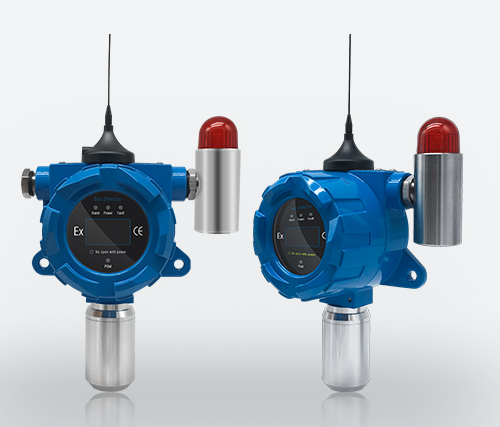






Release time:2025-10-27 Browsed0 order
In China, the domestic market for carbon dioxide detectors boasts promising prospects. As public attention to indoor air quality continues
to rise, the demand for products capable of detecting carbon dioxide concentration in residential environments will gradually
increase—providing broad civil market space for carbon dioxide detection products. For instance, in newly decorated homes or densely
populated places such as school dormitories and offices, carbon dioxide detectors help people promptly monitor whether indoor carbon
dioxide concentrations exceed standards, safeguarding a healthy living and working environment.
Meanwhile, in the industrial sector, numerous domestic industrial enterprises have rigid demands for monitoring carbon dioxide concentrations
in production environments to ensure safe and efficient production processes. In agriculture, with the development of modernized agriculture
, greenhouse gas management has become increasingly important. Carbon dioxide detection products assist in monitoring carbon dioxide
levels in greenhouses, thereby optimizing the plant growth environment and improving crop yield and quality. These factors all indicate that
China’s carbon dioxide detection product market has strong growth momentum on the demand side, with an optimistic overall market
outlook.

China’s carbon dioxide detector market has gradually integrated into the global industrial chain, which will bring more development
opportunities for domestic carbon dioxide detection product enterprises. On one hand, integration into the global industrial chain
enables domestic enterprises to access more advanced technologies and management experience, thereby improving their product
quality and competitiveness. On the other hand, it helps domestic enterprises expand into overseas markets, promoting their products
internationally to further increase market share.
In the future, the development of carbon dioxide detection products will place greater emphasis on intelligence and multifunctionality.
• Intelligence: By integrating IoT technology, carbon dioxide detectors can achieve remote monitoring and real-time data transmission,
allowing users to promptly understand and manage air quality. For example, users can check carbon dioxide concentration data from
different locations at any time via a mobile APP, set alarm thresholds, and receive timely notifications when concentrations exceed
standards.
• Multifunctionality: New carbon dioxide detectors may integrate additional sensors (e.g., temperature, humidity, and volatile organic
compound (VOCs) sensors) to provide comprehensive environmental monitoring solutions. Such multifunctional detection products
can meet diverse user needs for environmental monitoring and gain stronger market competitiveness.
Globally, carbon dioxide detectors have a wide range of application scenarios. From industry to healthcare, from environmental monitoring
to agricultural production, carbon dioxide detection products are required to ensure production safety, medical accuracy, and
environmental sustainability. For example, in the medical field, carbon dioxide detectors are advanced medical devices used to monitor
carbon dioxide concentrations in patients’ exhaled gas, assisting doctors in diagnosis and treatment. This diverse demand provides a
stable foundation for the global carbon dioxide detection product market.
Daxia Longque offers 3 intelligent solutions to upgrade ordinary sensors into intelligent ones. Each solution has its own advantages and
disadvantages, and the optimal one can be selected based on product demand positioning:
1. Standard WIFI Version: When the detected concentration of carbon monoxide/carbon dioxide exceeds the standard, the detection
result is sent to the user’s mobile phone or via a call for passive alert. The WIFI module remains powered off normally and only
switches to working mode when data needs to be sent—connecting to the router, transmitting data, and disconnecting immediately
after transmission.
2. Low-Power WIFI Version: Built on the standard WIFI version, it features upgraded WIFI power efficiency. The WIFI module maintains
a real-time connection to the router, allowing users to actively check the current concentration of carbon monoxide/carbon dioxide.
Potential emergencies can be predicted and addressed in advance.
3. 4G Version: If there is no router at home or the device is too far from the router (which may affect data transmission via WIFI), data
can be transmitted through 4G communication via nearby base stations.
Daxia Longque is a national high-tech enterprise specializing in R&D and innovation in the IoT field, providing customers with professional
solutions, products, and services. With 10 years of experience rooted in the wireless communication sector, the company has obtained
over 20 technical patents, with an annual output of more than 5 million communication modules. It delivers stable wireless products that
are sold worldwide. Adhering to the mission of “Making IoT Simpler and Smarter”, Daxia Longque is committed to providing high-quality
wireless communication modules and solutions.
The company’s product range includes wireless products such as Bluetooth modules, Wi-Fi modules, 4G modules, LoRa modules,
NFC modules, and Beacons. It also provides a complete set of systems (including APPs, mini-programs, and backend cloud services) and
software SDK services. Its products are mainly applied in IoT fields such as industrial IoT, automotive electronics, smart homes, healthcare,
and mobile internet.